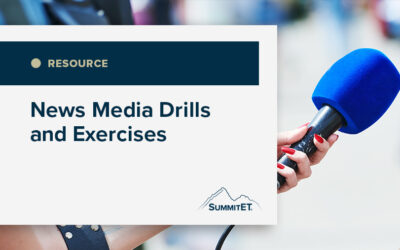Prepared by SummitET’s Vice President and Corporate Health Physicist, Steve Sugarman, this document briefly explains various radiation-related terms and concepts in an easy to read format and to provide additional information for those that may find it useful. Although organizationally different among the states, each has a radiation health department that can help with further questions and concerns.
Regulations and standards are in place to help minimize exposures to many sources of ionizing radiation. However, it is not possible to avoid all exposures. Radioactive materials are all around us. Terrestrial sources, such as radon, and cosmic radiation are contributors to our natural background radiation levels. Brick and concrete contain small amounts of naturally occurring radioactive materials such as uranium and thorium. Many of the foods that we eat contain naturally occurring radioactive materials – for instance, potassium-40 is found in bananas and Brazil nuts. Radioactive materials are routinely used in medicine for both diagnostic purposes (nuclear medicine) and therapeutic purposes (brachytherapy for the treatment of cancer, for example).
Basic Radiation Info Sheet
Download this document for free.
Resources
News Media Drills and Exercises
By combining all elements of news media into simulation exercises, you can ensure your team stands ready to interact in real-time with the media in the face of a crisis.
Creating a New Standard for Evaluating Tabletop Exercises
Tabletop exercises are vital in preparing organizations to respond to critical incidents. A new standard that implements quantitative and qualitative assessment tools has been developed to properly evaluate effectiveness.
Checklist for Designing a Successful Tabletop Exercise
The design of a tabletop exercise (TTX) has a profound impact on the success of the TTX. This checklist will help ensure critical design elements are present for a successful exercise.



